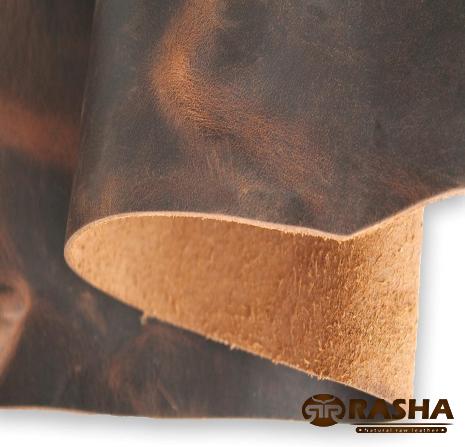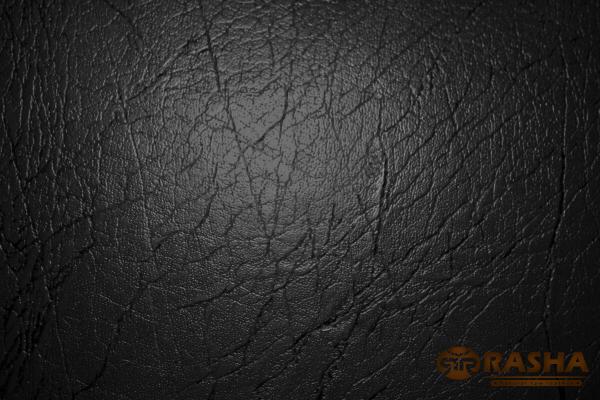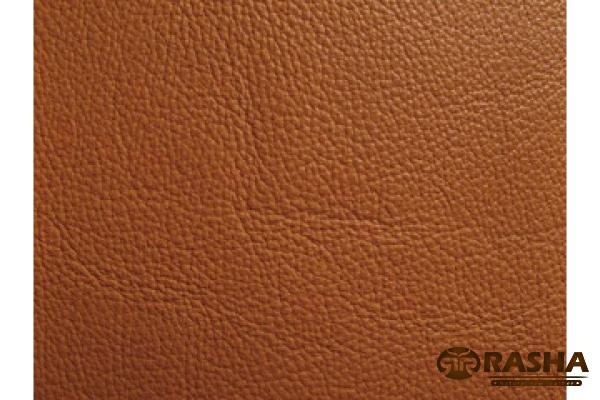Ostrich leather hide is a unique and sought-after material known for its distinctive characteristics and numerous applications. Derived from the hides of the African ostrich, this luxurious leather has gained popularity in the fashion and luxury industries due to its durability, softness, and exotic appearance. In this article, we will delve into the world of ostrich leather hide, uncovering its origins, production process, key features, and various uses. 1. Origins of Ostrich Leather Hide: 1.1 African Ostrich: The African ostrich (Struthio camelus) is the largest bird in the world, native to sub-Saharan Africa. Known for its long, strong legs and large size, the ostrich has been extensively predated for its valuable hide, feathers, and meat. 1.2 Ostrich Farming: Ostrich farming has gained prominence over the years, primarily for its sustainable and ethical approach to sourcing leather. South Africa, Zimbabwe, and Namibia are the top producers of ostrich leather hide, ensuring that the farming practices align with international standards. 2. Production Process: 2.1 Harvesting: Ostrich leather production begins with the harvesting of the hides. This is done by first humanely slaughtering the ostriches for their meat, feathers, and hides. 2.2 Tanning: The tanning process is critical to transform the raw hides into the durable and supple leather that is highly sought after. Ostrich hides are typically treated using chrome tanning or vegetable tanning methods, each yielding different results in terms of texture and color. 2.3 Dyeing and Finishing: Once tanned, the leather is ready for dyeing. Ostrich leather’s unique undulating pattern makes it particularly well-suited for various dyeing techniques, resulting in vivid and rich colors. The finishing process involves coating the leather with protective substances to enhance its durability and appearance. 3. Key Features of Ostrich Leather Hide: 3.1 Durability: Ostrich leather is renowned for being one of the most durable leathers available in the market. Its dense fiber structure and high oil content contribute to its longevity, making it resistant to scratches, tears, and other forms of damage. 3.2 Softness and Suppleness: Ostrich leather is incredibly soft and pliable, allowing it to mold easily to any shape or form.
leather
 This characteristic makes it an ideal material for a variety of applications, including apparel, accessories, and upholstery. 3.3 Unique Textural Appearance: The distinctive quill pattern of ostrich leather is what sets it apart from other types of leather. This highly recognizable feature, resulting from the arrangement of feathers during production, lends an exotic and luxurious appeal to the material. 3.4 Breathability and Moisture Resistance: Ostrich leather is naturally breathable, allowing for enhanced moisture wicking properties. It remains comfortable to wear even in hot and humid conditions, making it suitable for a wide range of climates. 4. Uses and Applications: 4.1 Fashion: Ostrich leather is highly prized in the fashion industry, particularly for the production of luxury accessories and high-end footwear. Its unique texture and appearance make it an excellent choice for handbags, wallets, belts, shoes, and other fashion items. 4.2 Automotive: The automotive industry also benefits from the utilization of ostrich leather. It is commonly used in the upholstery of high-end luxury vehicles, providing a touch of opulence and elegance. 4.3 Furniture and Interior Design: Ostrich leather finds its way into the world of interior design, adding a level of sophistication to furniture pieces like chairs, sofas, and ottomans. Its durability and distinctive texture make it an eye-catching choice for those seeking a luxurious ambiance. 4.4 Aviation and Marine: Ostrich leather is increasingly being used in the aviation and marine industries for luxury seating, cabin interiors, and yacht upholstery. Its combination of durability and luxurious appearance make it a desirable option for those seeking premium comfort. Conclusion: Ostrich leather hide offers an exclusive and exotic appeal that has captivated the fashion and luxury industries for decades. With its remarkable durability, softness, and unique textural appearance, ostrich leather is truly one-of-a-kind. From fashion accessories to automotive upholstery and interior design, its versatile applications showcase its undeniable charm and desirability. As consumer demand for sustainable and ethically sourced products increases, ostrich farming emerges as a viable solution, ensuring the continued availability of this remarkable leather for generations to come.
This characteristic makes it an ideal material for a variety of applications, including apparel, accessories, and upholstery. 3.3 Unique Textural Appearance: The distinctive quill pattern of ostrich leather is what sets it apart from other types of leather. This highly recognizable feature, resulting from the arrangement of feathers during production, lends an exotic and luxurious appeal to the material. 3.4 Breathability and Moisture Resistance: Ostrich leather is naturally breathable, allowing for enhanced moisture wicking properties. It remains comfortable to wear even in hot and humid conditions, making it suitable for a wide range of climates. 4. Uses and Applications: 4.1 Fashion: Ostrich leather is highly prized in the fashion industry, particularly for the production of luxury accessories and high-end footwear. Its unique texture and appearance make it an excellent choice for handbags, wallets, belts, shoes, and other fashion items. 4.2 Automotive: The automotive industry also benefits from the utilization of ostrich leather. It is commonly used in the upholstery of high-end luxury vehicles, providing a touch of opulence and elegance. 4.3 Furniture and Interior Design: Ostrich leather finds its way into the world of interior design, adding a level of sophistication to furniture pieces like chairs, sofas, and ottomans. Its durability and distinctive texture make it an eye-catching choice for those seeking a luxurious ambiance. 4.4 Aviation and Marine: Ostrich leather is increasingly being used in the aviation and marine industries for luxury seating, cabin interiors, and yacht upholstery. Its combination of durability and luxurious appearance make it a desirable option for those seeking premium comfort. Conclusion: Ostrich leather hide offers an exclusive and exotic appeal that has captivated the fashion and luxury industries for decades. With its remarkable durability, softness, and unique textural appearance, ostrich leather is truly one-of-a-kind. From fashion accessories to automotive upholstery and interior design, its versatile applications showcase its undeniable charm and desirability. As consumer demand for sustainable and ethically sourced products increases, ostrich farming emerges as a viable solution, ensuring the continued availability of this remarkable leather for generations to come.
Specifications of leather
 I. The Ostrich Leather Market: An Overview The ostrich leather market has experienced steady growth over the years, driven by the demand from the fashion and luxury industries. With its unique characteristics and exotic appeal, ostrich leather offers a premium alternative to traditional leathers like cowhide or sheepskin. As a result, the market for ostrich leather has expanded globally, with a wide range of stakeholders involved in its production, supply chain, and distribution. II. Market Trends and Drivers 1. Growing Demand for Sustainable and Ethical Products Consumers are increasingly seeking products that are sourced sustainably and produced ethically. Ostrich leather, when sourced from reputable ostrich farms, fulfills these criteria. The use of traditional farming methods and adherence to international standards ensure that the production process minimizes environmental impact and prioritizes animal welfare. 2. Rising Disposable Income and Consumer Aspirations The growing middle class in emerging economies has led to an increase in discretionary spending, particularly on luxury goods. Ostrich leather products, known for their high quality and exclusivity, cater to the aspirations of affluent consumers looking for distinctive and prestigious items. 3. Demand for Exotic and Exclusive Materials Ostrich leather’s unique textural appearance, characterized by its quill pattern, sets it apart from other types of leather. Its rarity and exotic nature appeal to consumers looking for something beyond the ordinary. The limited supply of ostrich leather further enhances its exclusivity and desirability. III. The Ostrich Leather Supply Chain 1. Ostrich Farms Ostrich leather production begins with specialized ostrich farms that breed and raise ostriches. These farms ensure proper feeding, healthcare, and overall well-being of the birds. The skins are acquired through the slaughtering process, adhering to strict ethical guidelines to minimize animal distress. 2. Tanneries Once the skins are collected, they are sent to specialized tanneries where the hides undergo treatment to transform them into leather. Tanning involves processes such as curing, hair removal, and dyeing, which further enhance the durability, softness, and visual appeal of ostrich leather. 3. Manufacturers and Designers Manufacturers and designers play a crucial role in processing the ostrich leather into finished products. These include fashion brands, accessory designers, furniture manufacturers, and auto upholsterers who leverage the unique properties of ostrich leather to create high-end products for various industries. IV. Key Players in the Ostrich Leather Market 1. Ostrich Farms Reputable ostrich farms, primarily located in South Africa, Zimbabwe, and Namibia, are the primary suppliers of ostrich hides. These farms ensure sustainable practices and comply with international regulations governing animal welfare and environmental sustainability.
I. The Ostrich Leather Market: An Overview The ostrich leather market has experienced steady growth over the years, driven by the demand from the fashion and luxury industries. With its unique characteristics and exotic appeal, ostrich leather offers a premium alternative to traditional leathers like cowhide or sheepskin. As a result, the market for ostrich leather has expanded globally, with a wide range of stakeholders involved in its production, supply chain, and distribution. II. Market Trends and Drivers 1. Growing Demand for Sustainable and Ethical Products Consumers are increasingly seeking products that are sourced sustainably and produced ethically. Ostrich leather, when sourced from reputable ostrich farms, fulfills these criteria. The use of traditional farming methods and adherence to international standards ensure that the production process minimizes environmental impact and prioritizes animal welfare. 2. Rising Disposable Income and Consumer Aspirations The growing middle class in emerging economies has led to an increase in discretionary spending, particularly on luxury goods. Ostrich leather products, known for their high quality and exclusivity, cater to the aspirations of affluent consumers looking for distinctive and prestigious items. 3. Demand for Exotic and Exclusive Materials Ostrich leather’s unique textural appearance, characterized by its quill pattern, sets it apart from other types of leather. Its rarity and exotic nature appeal to consumers looking for something beyond the ordinary. The limited supply of ostrich leather further enhances its exclusivity and desirability. III. The Ostrich Leather Supply Chain 1. Ostrich Farms Ostrich leather production begins with specialized ostrich farms that breed and raise ostriches. These farms ensure proper feeding, healthcare, and overall well-being of the birds. The skins are acquired through the slaughtering process, adhering to strict ethical guidelines to minimize animal distress. 2. Tanneries Once the skins are collected, they are sent to specialized tanneries where the hides undergo treatment to transform them into leather. Tanning involves processes such as curing, hair removal, and dyeing, which further enhance the durability, softness, and visual appeal of ostrich leather. 3. Manufacturers and Designers Manufacturers and designers play a crucial role in processing the ostrich leather into finished products. These include fashion brands, accessory designers, furniture manufacturers, and auto upholsterers who leverage the unique properties of ostrich leather to create high-end products for various industries. IV. Key Players in the Ostrich Leather Market 1. Ostrich Farms Reputable ostrich farms, primarily located in South Africa, Zimbabwe, and Namibia, are the primary suppliers of ostrich hides. These farms ensure sustainable practices and comply with international regulations governing animal welfare and environmental sustainability.
buy leather
 2. Tanneries and Leather Manufacturers Specialized tanneries and leather manufacturers are responsible for processing the raw hides into high-quality ostrich leather. These companies invest in modern machinery, utilize skilled labor, and employ advanced techniques to ensure the production of consistent, durable, and visually appealing ostrich leather. 3. Luxury Fashion Brands and Designers Leading luxury fashion brands and designers incorporate ostrich leather into their collections, highlighting its exclusivity and uniqueness. These brands create a demand for ostrich leather products, driving its market growth and influencing consumer preferences. V. Pricing and Market Dynamics The price of ostrich leather is determined by various factors, including the size and grade of the hides, production costs, and market demand. Ostrich leather is relatively expensive compared to other leathers due to its limited supply and the intricate nature of its production process. The market dynamics can be influenced by factors such as fluctuations in the availability of raw ostrich hides, changes in consumer demand, and shifts in overall economic conditions. VI. Challenges and Opportunities in the Ostrich Leather Industry 1. Sustainability and Environmental Concerns While ostrich farming is generally considered more sustainable than traditional livestock farming, concerns over land use, water consumption, and carbon emissions persist. Farms that adopt environmentally friendly practices gain a competitive edge and meet the growing demand for sustainable products. 2. Counterfeit Products and Illegal Trading As the demand for ostrich leather grows, the risk of counterfeit products and illegal trading increases. Industry stakeholders must collaborate to implement stricter quality control measures, ensure traceability, and combat illicit trading to protect the integrity and reputation of genuine ostrich leather. 3. Collaborative Industry Efforts The ostrich leather industry can benefit from collaborative efforts among stakeholders, including farmers, tanneries, manufacturers, and retailers. Collaboration facilitates knowledge sharing, standardization of production processes, and the development of best practices, which fosters a sustainable and thriving market for ostrich leather. VII. Future Outlook for the Ostrich Leather Market The future of the ostrich leather market looks promising, propelled by the increasing demand for sustainable and ethically sourced luxury goods. Advancements in farming practices, tanning technologies, and product innovation will continue to enhance the overall quality and appeal of ostrich leather. As consumer consciousness evolves and demand rises, the market for ostrich leather is expected to expand further, opening up opportunities for new players and driving economic growth in the industry. Conclusion: Ostrich leather hide has secured its place in the world of luxury, fashion, and design with its exceptional qualities and exotic appeal. The growing demand for sustainable and ethically sourced products, coupled with rising disposable incomes and aspirations, has driven the market for ostrich leather. Industry stakeholders must navigate challenges such as sustainability concerns and counterfeit products to ensure the long-term success of the market. Collaboration, innovation, and a commitment to high-quality production will shape the future of the ostrich leather industry, ensuring its continued growth and prominence on the global stage.
2. Tanneries and Leather Manufacturers Specialized tanneries and leather manufacturers are responsible for processing the raw hides into high-quality ostrich leather. These companies invest in modern machinery, utilize skilled labor, and employ advanced techniques to ensure the production of consistent, durable, and visually appealing ostrich leather. 3. Luxury Fashion Brands and Designers Leading luxury fashion brands and designers incorporate ostrich leather into their collections, highlighting its exclusivity and uniqueness. These brands create a demand for ostrich leather products, driving its market growth and influencing consumer preferences. V. Pricing and Market Dynamics The price of ostrich leather is determined by various factors, including the size and grade of the hides, production costs, and market demand. Ostrich leather is relatively expensive compared to other leathers due to its limited supply and the intricate nature of its production process. The market dynamics can be influenced by factors such as fluctuations in the availability of raw ostrich hides, changes in consumer demand, and shifts in overall economic conditions. VI. Challenges and Opportunities in the Ostrich Leather Industry 1. Sustainability and Environmental Concerns While ostrich farming is generally considered more sustainable than traditional livestock farming, concerns over land use, water consumption, and carbon emissions persist. Farms that adopt environmentally friendly practices gain a competitive edge and meet the growing demand for sustainable products. 2. Counterfeit Products and Illegal Trading As the demand for ostrich leather grows, the risk of counterfeit products and illegal trading increases. Industry stakeholders must collaborate to implement stricter quality control measures, ensure traceability, and combat illicit trading to protect the integrity and reputation of genuine ostrich leather. 3. Collaborative Industry Efforts The ostrich leather industry can benefit from collaborative efforts among stakeholders, including farmers, tanneries, manufacturers, and retailers. Collaboration facilitates knowledge sharing, standardization of production processes, and the development of best practices, which fosters a sustainable and thriving market for ostrich leather. VII. Future Outlook for the Ostrich Leather Market The future of the ostrich leather market looks promising, propelled by the increasing demand for sustainable and ethically sourced luxury goods. Advancements in farming practices, tanning technologies, and product innovation will continue to enhance the overall quality and appeal of ostrich leather. As consumer consciousness evolves and demand rises, the market for ostrich leather is expected to expand further, opening up opportunities for new players and driving economic growth in the industry. Conclusion: Ostrich leather hide has secured its place in the world of luxury, fashion, and design with its exceptional qualities and exotic appeal. The growing demand for sustainable and ethically sourced products, coupled with rising disposable incomes and aspirations, has driven the market for ostrich leather. Industry stakeholders must navigate challenges such as sustainability concerns and counterfeit products to ensure the long-term success of the market. Collaboration, innovation, and a commitment to high-quality production will shape the future of the ostrich leather industry, ensuring its continued growth and prominence on the global stage.










Your comment submitted.